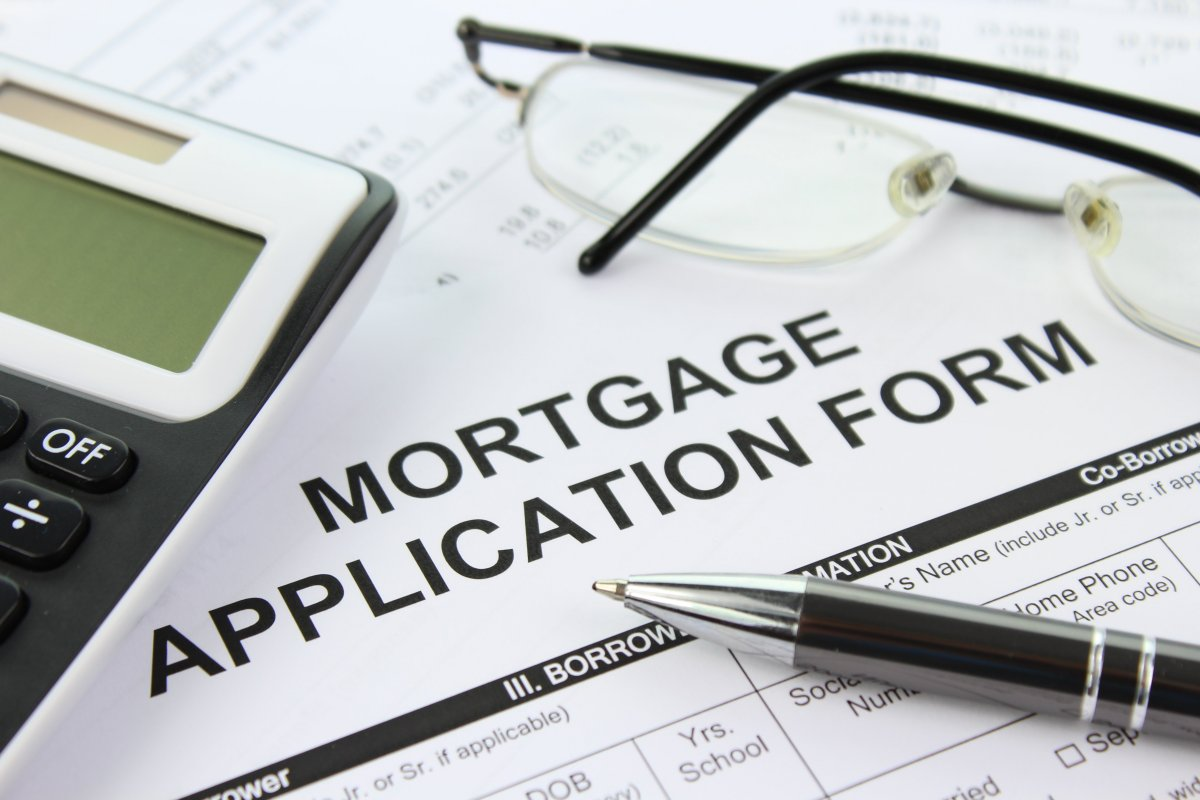Want to buy a house in the United States? You need to know what loan is suited for you. Here are the seven most common types of mortgage loans in the US

Updated May 29, 2024
With the dream of home ownership comes the journey of finding the right mortgage loan. As property prices continue to fluctuate, it is wise to know the most popular types of mortgage loans taken by the average homeowner in the US.
Mortgage professionals can share this with their clients to help them understand the different types of mortgage loans. This article might also be useful for real estate investors who are searching for loans to finance their investments.
The different types of mortgage loans in the US
There are many home loans available in the US for the aspiring homeowner. Each one has varying advantages and disadvantages. They also differ in terms of the qualifications and criteria needed. Since there are numerous types of mortgage loans in the US, Mortgage Professional has trimmed it down to the seven most common ones. Read on to know more about them.
Fixed-rate vs. adjustable-rate mortgages
The first two types of mortgage loans that we will discuss are the fixed-rate and adjustable-rate mortgages. The easiest way to distinguish the two is to define their timeframe and how the interest rates change over the course of that period.
For fixed-rate mortgages, there is a longer period when the homeowner’s interest rates will remain constant. Adjustable-rate mortgages, on the other hand, also have a specified timeframe when the interest rates will not fluctuate. However, it is shorter and will change to an adjustable interest rate afterwards.
Fixed-rate mortgage or conventional home loans
About 90% of home buyers choose a 30-year fixed-rate loan, making it the most popular mortgage type in the country.
As its name suggests, the interest rate does not change over 30 years. This means that borrowers can enjoy lower monthly payments because the mortgage is stretched over a long time.
This arrangement also protects homeowners from potentially drastic spikes in monthly payments due to fluctuations in mortgage rates. However, you will pay more interest over the loan’s lifetime.
Most lending institutions also offer mortgage terms of 15 and 20 years – however, borrowers will need to repay the principal in a shorter time frame, so monthly payments will be considerably higher.
The advantage of shorter-term loans is their lower interest rates. Each mortgage payment repays a larger fraction of the principal, so 15- and 20-year loans cost significantly less overall.
Adjustable-rate mortgage (ARM)
An ARM home loan starts with a rate that remains constant for a specified period, but it switches to an adjustable interest rate for the remainder of its term.
Also called the “teaser” rate, it is initially set below the market rate of most comparable fixed loans. Nevertheless, it is expected to rise at regular intervals called the adjustment frequency. According to mortgage giant Freddie Mac, ARMs will surpass fixed rates if held long enough.
ARMs are significantly more complex than fixed-rate loans because adjustments are tied to indexes like Treasury bills or certificates of deposit.
Upon signing your loan, borrowers agree to pay at a rate that can be marginally higher than the adjustment index. You also agree to a ceiling or the maximum rate that the mortgage can reach throughout its lifetime.
ARMs start much cheaper than fixed-rate mortgages, at least for the first three to seven years. However, monthly payments can change frequently, and subsequent adjustments will follow current market rates – not the initial below-market value.
Fixed rates are relatively safer and more predictable for most, but variable rates can be advantageous for short-term homeowners who expect to move in a few years.
Want to better understand the difference between fixed-rate and adjustable-rate mortgages? Watch this video below:
For more in-depth information on ARMs, go over our adjustable rate mortgage guide. It discusses the different types and outlines the pros and cons.
Aside from fixed-rate and adjustable rate, mortgage lenders in the US also offer home loans such as interest-only loans, FHA loans, VA mortgage loans, jumbo mortgages, and USDA loans. Let us discuss them further below:
Interest-only loans
Fixed-rate and ARM loans require monthly payments to amortize both the principal and interest. In contrast, interest-only mortgage loans require that borrowers pay just the interest for the first several years of the term.
Once the initial period ends, the borrower will start paying both the interest and principal. You can typically see interest-only loans as a structure of repaying ARMs.
For instance, a borrower will pay only the interest during the first 10 years of a 10/1 ARM agreement. After the 10th year, the rate will adjust annually, and you will start paying for the principal as well.
The bottom line is that interest-only loans are highly complex and are not recommended for most borrowers. You can enjoy low monthly payments during the interest-only period, but costs will sharply rise once it is over.
FHA loans
This type of home loan is guaranteed by the Federal Housing Administration (FHA) and issued by a government-approved lender.
Designed to help low- to moderate-income borrowers, FHA loans allow down payments as low as 3.5% if you have a credit score of 580 or higher. You can still qualify if you have a credit score between 579 and 500, but you need to make at least a 10% down payment.
Would-be borrowers also need to have a debt-to-income ratio (DTI) of 50% or less to get approval. The DTI is the percentage of your pre-tax income that you use to pay student loans, auto loans, credit cards, mortgages, and other debts.
Regardless of the down payment amount, FHA requires borrowers to pay for mortgage insurance to protect the lender in case of default.
Our explainer on FHA loans goes over requirements and tips, should you consider this loan option.

VA loans
VA mortgage loans are insured by the US Department of Veteran Affairs (VA). Like conventional mortgages, they can be issued by banks, private lenders, and credit unions.
Active military personnel and veterans who meet the required length of service can qualify for a VA loan. Surviving spouses of service members who died while on duty are also eligible.
Unlike most other mortgages, VA home purchase loans do not require mortgage insurance and down payment. Interest rates also tend to be lower than FHA home loans and fixed-rate mortgages.
The program also offers cash-out refinancing to replace a conventional mortgage with a VA loan. Borrowers can also finance the cost of home improvements.
VA loans have some limitations and potential drawbacks for some borrowers. For example, you cannot purchase a vacation home or investment property. A VA-endorsed appraiser must first evaluate whether the property meets the department’s standards.
Lastly, the borrower also needs to pay a funding fee to cover the costs of foreclosing – in case the mortgagor defaults.
Jumbo mortgages
Jumbo mortgages are loans that exceed the amounts set annually by the Federal Housing Finance Agency (FHFA).
You need a jumbo loan if the property you want to buy is in states like California or New York. These states are high-cost places in terms of house prices and the amount provided by the home loans above might not be sufficient.
If the price does not conform to FHFA thresholds, you need to have a solid credit score of 700 or higher. The lender may require you to put away up to 12 months of mortgage payments on a cash reserve.
Since you are borrowing a large amount, there are additional fees that can lead to steeper closing costs. The jumbo mortgage lender can also require at least two appraisals on the home’s value before approval.
USDA loans
Backed by the US Department of Agriculture, USDA loans are designed to help low-income applicants purchase homes in rural areas and some suburbs. The program allows you to obtain loans directly from USDA or a participating lender with interest rates as low as 1%.
To qualify, you must have a debt ratio of 41% or lower. USDA will likely consider higher DTIs if your credit score is at least 640.
USDA also issues home loans to applicants deemed unable to secure mortgages from traditional channels. These are borrowers who are below the low-income limit and without decent, safe, and sanitary housing.
Do you think you might qualify for this type of mortgage loan? Watch this video on what you need to know about USDA loans and its pros and cons:
Other types of mortgage loans for American homebuyers
Apart from the seven types listed above, mortgage companies in the US also offer other mortgage loans. They might not be as popular, but they are still worth knowing if you are looking for a wider range of options. Some of them are:
- piggyback loans
- balloon mortgage
- renovation mortgage
- portfolio loans
- non-qualifying loans
- physician loans
- construction loans
What is the best type of mortgage loan in the US?
As the saying goes: different strokes for different folks. Homebuyers differ from one another. As such, these discrepancies define the type of mortgage loan that they will go for.
If you want an interest rate that is fixed for years, choose a fixed-rate mortgage loan. For those who are looking for a more flexible option, an interest-only mortgage loan might be suited for you. This is also great for Americans who are looking for real estate properties to invest in.
All in all, the best type of mortgage loans in the US is the one that fits your preference, personal circumstances, and financial capacity. An expert’s advice might also be helpful in deciding which loan is the most suitable. See our Best in Mortgage page to find the right mortgage agent and mortgage lender to help you prepare for your homeownership journey.
Have you ever applied for any of these types of mortgage loans? How was the experience? We’d love to read your story in the comments below.



